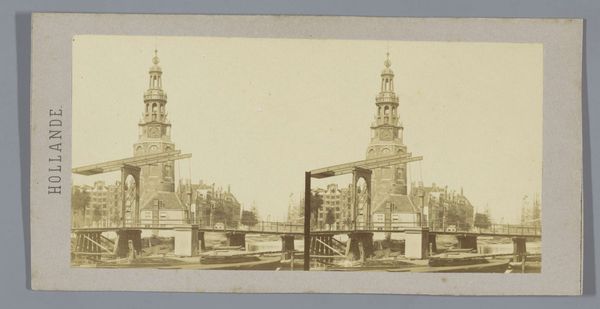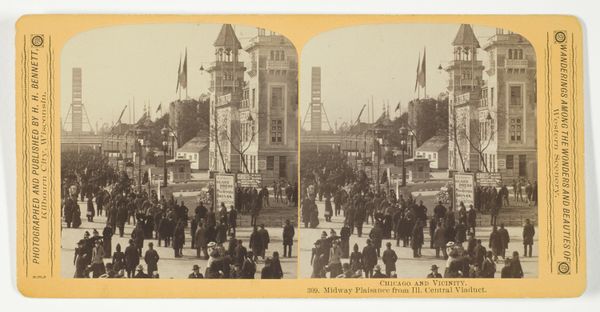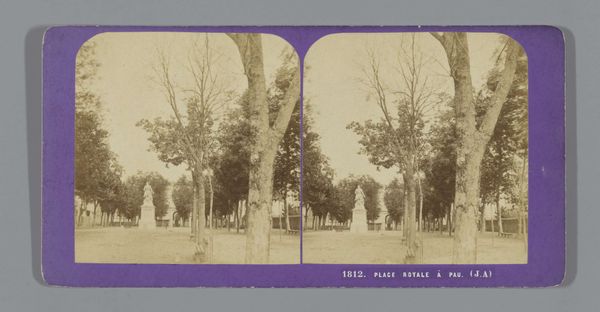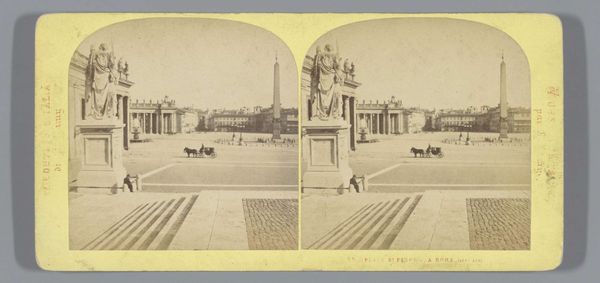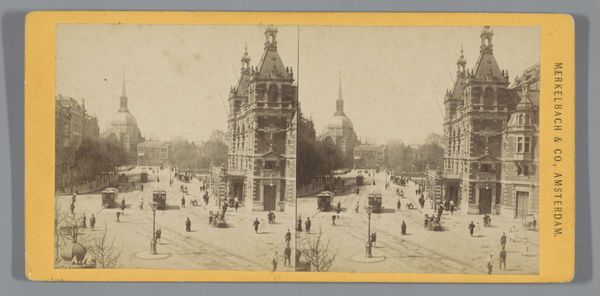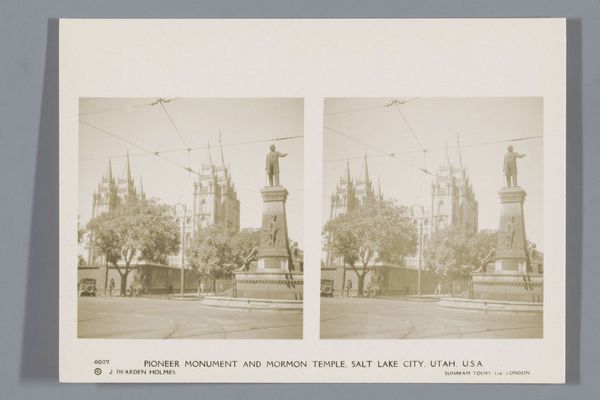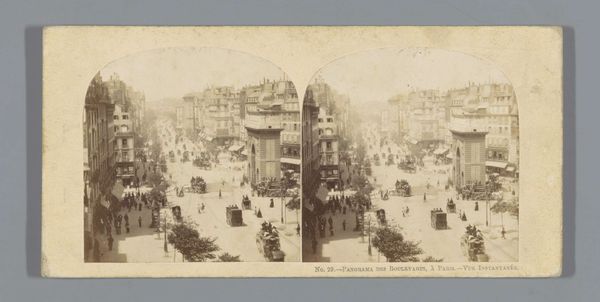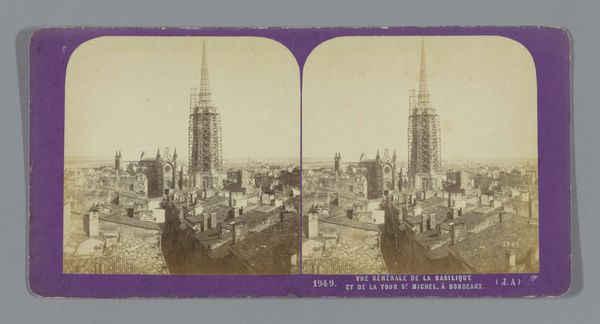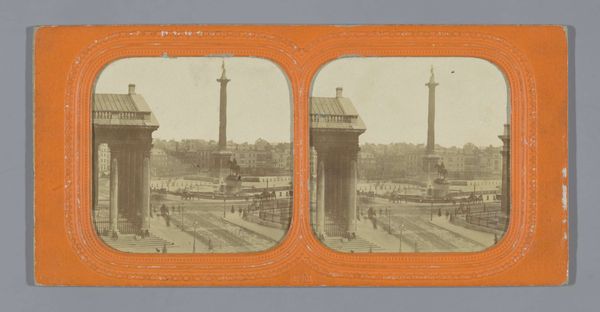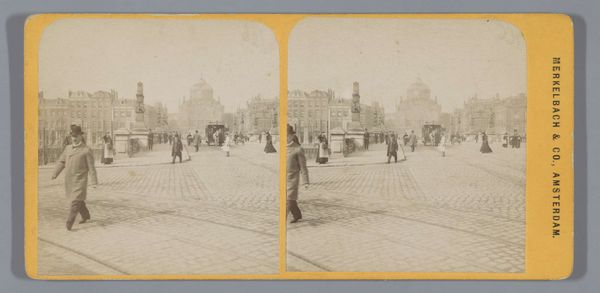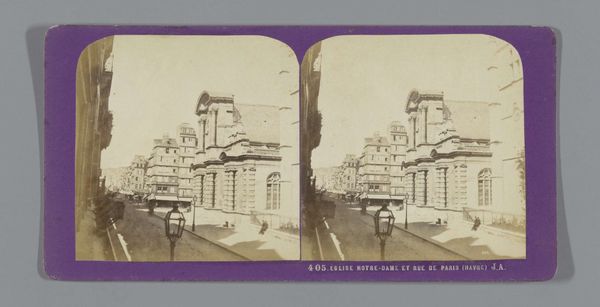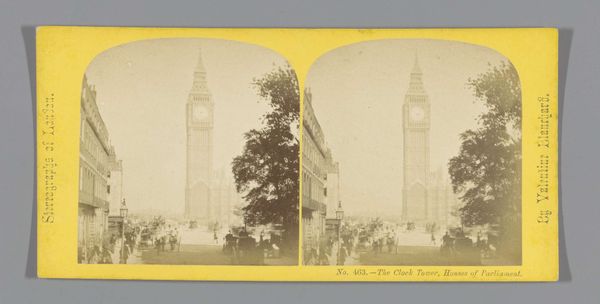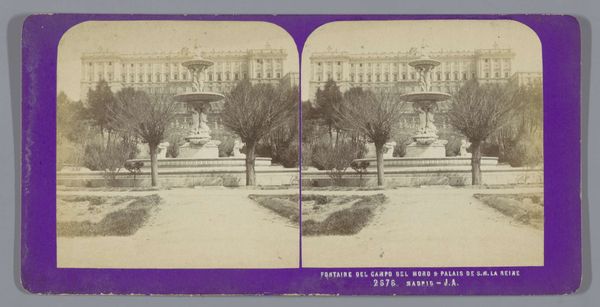
Dimensions: height 85 mm, width 170 mm
Copyright: Rijks Museum: Open Domain
Editor: Here we have "Gezicht op twee rostrazuilen te Bordeaux," a photograph—specifically a daguerreotype—created sometime between 1862 and 1876 by Jean Andrieu. The columns create a symmetrical, almost theatrical, presence. It’s so interesting to see an early photo treated as a piece of art. What can you tell me about this piece, from a historical perspective? Curator: The immediate thing to note is the daguerreotype process itself. Its emergence dramatically altered visual culture, democratizing portraiture and enabling the depiction of cityscapes like this. Consider how the column is treated. This photo documents its physical presence but also its role within Bordeaux's civic identity. Editor: That's a good point. Are you suggesting this is about civic identity? Curator: Yes, partly. Andrieu, photographing Bordeaux, participates in constructing a public image of the city. Rostral columns, traditionally decorated with ships’ prows, celebrated naval victories and, by extension, national pride. Editor: So, their reproduction in a photograph is continuing the mission, broadcasting an ideology to the masses? Curator: Precisely. And the fact that this is a stereo card meant it was consumed as a domestic object. Someone sitting in their parlor viewing this is implicitly internalizing this image of national pride, subtly influenced by this vision of the city and its symbols of power. How does that resonate with you, considering today’s political landscape? Editor: It is intriguing. You know, seeing it not just as a landscape, but also as an element of socio-political manipulation is eye-opening. Thanks. Curator: My pleasure! Recognizing that images, especially public ones, always operate within broader systems of power helps us understand their continued relevance.
Comments
No comments
Be the first to comment and join the conversation on the ultimate creative platform.
